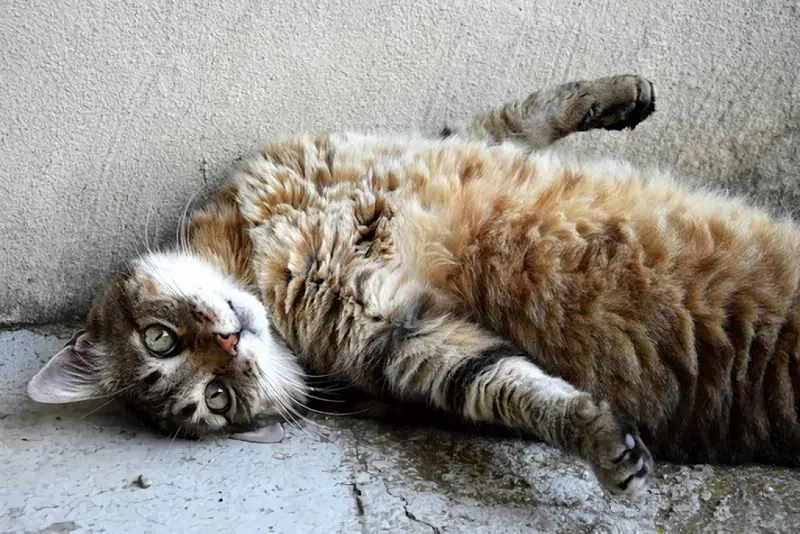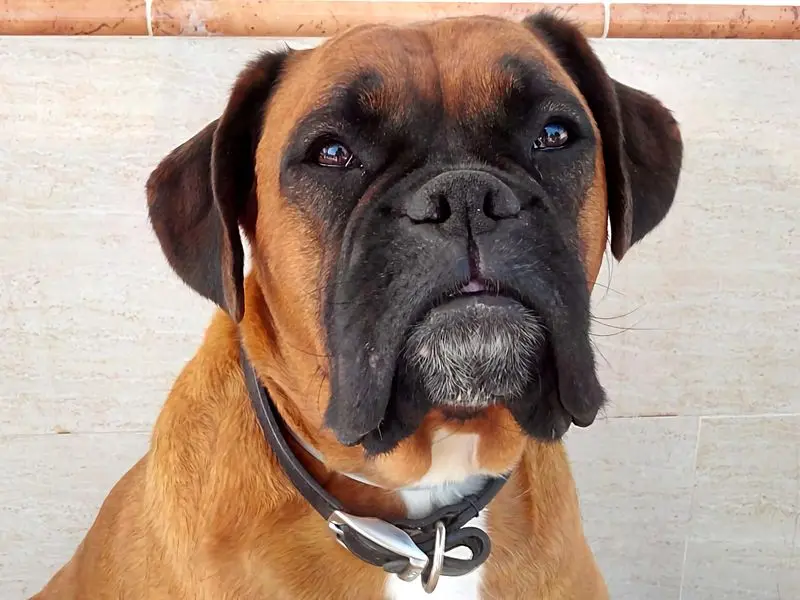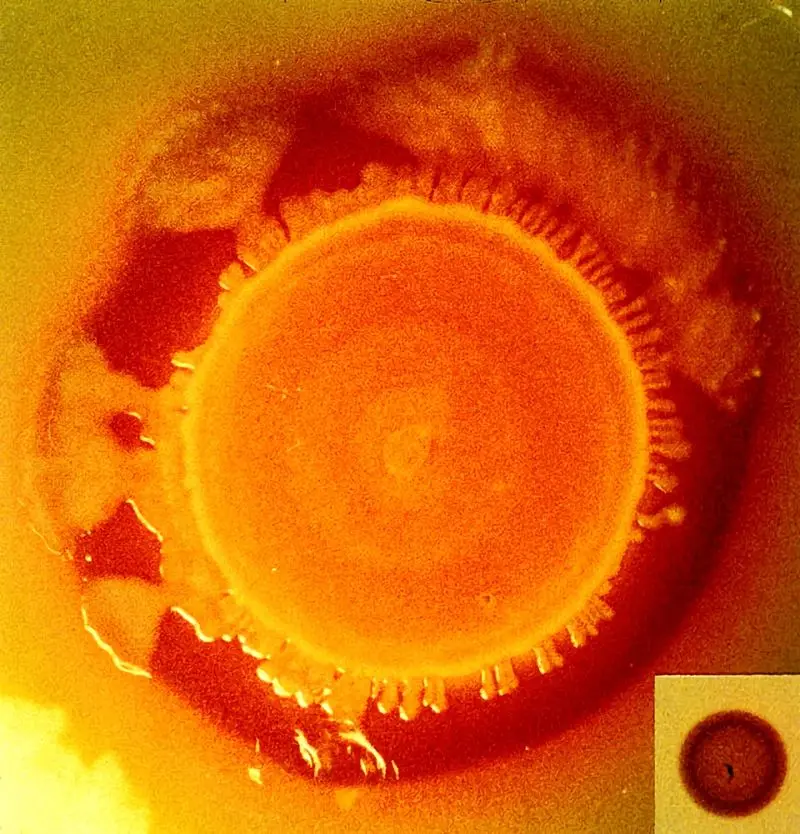 Dogs: a) 5 mg/kg PO initially, then 1.2 - 2.8 mg/kg PO once daily (Frey and Rieh 1981) b) 1.1 mg/kg PO q12h (McConnell and Hughey 1987)Horses: a) 5 mg/kg by slow IV, then 10 mg/kg PO (top dressed in feed) twice daily for up to 14days or 10 mg/kg PO (top dressed in feed) bid for up to 14... ↪ Read more
Dogs: a) 5 mg/kg PO initially, then 1.2 - 2.8 mg/kg PO once daily (Frey and Rieh 1981) b) 1.1 mg/kg PO q12h (McConnell and Hughey 1987)Horses: a) 5 mg/kg by slow IV, then 10 mg/kg PO (top dressed in feed) twice daily for up to 14days or 10 mg/kg PO (top dressed in feed) bid for up to 14... ↪ Read more Veterinary Drug Handbook (VDH) is the reference veterinarians turn to when they want an independent source of information on the drugs that are used in veterinary medicine today.
-
 Is veterinary Liniment Gel safe for humans?
Is veterinary Liniment Gel safe for humans? -
 Giving Your Cat A Pill
Giving Your Cat A Pill -
 Dog Aggression
Dog Aggression -
 Dogs May Help Boost Infant Health
Dogs May Help Boost Infant Health -
 Animal-Assisted Therapy, Veterinary Social Work, & Social Work With People & Pets in Crisis
Animal-Assisted Therapy, Veterinary Social Work, & Social Work With People & Pets in Crisis -
 On-demand veterinary service gives advice on poorly pets
On-demand veterinary service gives advice on poorly pets -
 Should we stop throwing sticks for dogs?
Should we stop throwing sticks for dogs? -
 Can breathing in cat hair be harmful?
Can breathing in cat hair be harmful? -
 What does PU/PD mean in veterinary medicine?
What does PU/PD mean in veterinary medicine? -
 Bill calls for ban on sales of dogs, cats in Maine pet stores
Bill calls for ban on sales of dogs, cats in Maine pet stores -
 Common Meanings Of Cat Behavior
Common Meanings Of Cat Behavior -
 What does DVM stand for in veterinary?
What does DVM stand for in veterinary? -
 Curing Bad Cat Breath
Curing Bad Cat Breath -
 New Tracking Tool for Pathogen Investigators
New Tracking Tool for Pathogen Investigators -
Can binturongs be kept as pets?
-
 How long do instruments stay sterile after autoclaving veterinary?
How long do instruments stay sterile after autoclaving veterinary?
Doses - NAPROXEN
 Dogs: a) 5 mg/kg PO initially, then 1.2 - 2.8 mg/kg PO once daily (Frey and Rieh 1981) b) 1.1 mg/kg PO q12h (McConnell and Hughey 1987)Horses: a) 5 mg/kg by slow IV, then 10 mg/kg PO (top dressed in feed) twice daily for up to 14days or 10 mg/kg PO (top dressed in feed) bid for up to 14... ↪ Read more
Dogs: a) 5 mg/kg PO initially, then 1.2 - 2.8 mg/kg PO once daily (Frey and Rieh 1981) b) 1.1 mg/kg PO q12h (McConnell and Hughey 1987)Horses: a) 5 mg/kg by slow IV, then 10 mg/kg PO (top dressed in feed) twice daily for up to 14days or 10 mg/kg PO (top dressed in feed) bid for up to 14... ↪ Read more NAPROXEN
 ↪ Doses - NAPROXEN
Chemistry - Naproxen is a propionic acid derivative, and has similar structure and pharmacologicprofiles as ibuprofen and ketoprofen. It is a white to off-white crystalline powder with an apparentpKa of 4.15. It is practically insoluble in water and freely soluble in... ↪ Read more
↪ Doses - NAPROXEN
Chemistry - Naproxen is a propionic acid derivative, and has similar structure and pharmacologicprofiles as ibuprofen and ketoprofen. It is a white to off-white crystalline powder with an apparentpKa of 4.15. It is practically insoluble in water and freely soluble in... ↪ Read more Doses - NANDROLONE DECANOATE
 ↪ Description - NANDROLONE DECANOATE
Dogs: For treatment of anemia in patients with chronic renal failure: a) 1 - 1.5 mg/kg IM once weekly; may require 2-3 months to achieve beneficial effects.(Polzin and Osborne 1985) b) 5 mg/kg IM (maximum of 200 mg/week) every 2-3 weeks (Ross et al.... ↪ Read more
↪ Description - NANDROLONE DECANOATE
Dogs: For treatment of anemia in patients with chronic renal failure: a) 1 - 1.5 mg/kg IM once weekly; may require 2-3 months to achieve beneficial effects.(Polzin and Osborne 1985) b) 5 mg/kg IM (maximum of 200 mg/week) every 2-3 weeks (Ross et al.... ↪ Read more NANDROLONE DECANOATE
 ↪ Doses - NANDROLONE DECANOATE
Chemistry - An injectable anabolic steroid, nandrolone decanoate occurs as a white, to creamywhite, crystalline powder. It is odorless or may have a slight odor and melts between 33-37°C. Nandrolone decanoate is soluble in alcohol and vegetable oils and... ↪ Read more
↪ Doses - NANDROLONE DECANOATE
Chemistry - An injectable anabolic steroid, nandrolone decanoate occurs as a white, to creamywhite, crystalline powder. It is odorless or may have a slight odor and melts between 33-37°C. Nandrolone decanoate is soluble in alcohol and vegetable oils and... ↪ Read more Doses - NALTREXONE HCL
 ↪ Description - NALTREXONE HCL
Dogs: As adjunctive therapy in behavior disorders: a) For tail chasing or excessive licking: First give 0.01 mg/kg SubQ of naloxone to determine if narcotic antagonists may be effective, if so give naltrexone PO at 1 - 2 mg/kgdaily. Long term therapy may be... ↪ Read more
↪ Description - NALTREXONE HCL
Dogs: As adjunctive therapy in behavior disorders: a) For tail chasing or excessive licking: First give 0.01 mg/kg SubQ of naloxone to determine if narcotic antagonists may be effective, if so give naltrexone PO at 1 - 2 mg/kgdaily. Long term therapy may be... ↪ Read more NALTREXONE HCL
 ↪ Doses - NALTREXONE HCL
Chemistry - A synthetic opiate antagonist, naltrexone HCl occurs as white crystals having a bittertaste. 100 mg are soluble in one ml of water.Storage, Stability, Compatibility Naltrexone tablets should be stored at room temperature inwell-closed... ↪ Read more
↪ Doses - NALTREXONE HCL
Chemistry - A synthetic opiate antagonist, naltrexone HCl occurs as white crystals having a bittertaste. 100 mg are soluble in one ml of water.Storage, Stability, Compatibility Naltrexone tablets should be stored at room temperature inwell-closed... ↪ Read more Doses - NALOXONE HCL
 ↪ Description - NALOXONE HCL
Dogs & Cats: For opioid reversal: a) 0.002 - 0.02 mg/kg IV or IM; duration of effect 0.5-1 hour. (Bednarski 1989) b) Dogs: 0.04 mg/kg IV, IM or SQ (Package Insert; P/M® Naloxone HCl Injection¯P/M; Mallinckrodt), (Kirk 1989) c) Cats: 0.05 - 0.1... ↪ Read more
↪ Description - NALOXONE HCL
Dogs & Cats: For opioid reversal: a) 0.002 - 0.02 mg/kg IV or IM; duration of effect 0.5-1 hour. (Bednarski 1989) b) Dogs: 0.04 mg/kg IV, IM or SQ (Package Insert; P/M® Naloxone HCl Injection¯P/M; Mallinckrodt), (Kirk 1989) c) Cats: 0.05 - 0.1... ↪ Read more NALOXONE HCL
 ↪ Doses - NALOXONE HCL
Chemistry - An opiate antagonist, naloxone HCl is structurally related to oxymorphone. It occursas a white to slightly off-white powder with a pKa of 7.94. Naloxone is soluble in water andslightly soluble in alcohol. The pH range of commercially available injectable... ↪ Read more
↪ Doses - NALOXONE HCL
Chemistry - An opiate antagonist, naloxone HCl is structurally related to oxymorphone. It occursas a white to slightly off-white powder with a pKa of 7.94. Naloxone is soluble in water andslightly soluble in alcohol. The pH range of commercially available injectable... ↪ Read more Doses - MORPHINE SULFATE
 ↪ Description - MORPHINE SULFATE
Dogs: For heartworm prevention: 3 mcg/kg PO once monthly. (Package Insert-ProHeart®); Fort Dodge)Cattle: For labeled indications: 1 ml (5 mg)/10 kg (22 lb) BW applied directly to the hair and skinalong the top of the back from the withers to the base... ↪ Read more
↪ Description - MORPHINE SULFATE
Dogs: For heartworm prevention: 3 mcg/kg PO once monthly. (Package Insert-ProHeart®); Fort Dodge)Cattle: For labeled indications: 1 ml (5 mg)/10 kg (22 lb) BW applied directly to the hair and skinalong the top of the back from the withers to the base... ↪ Read more Doses - MORPHINE SULFATE
 ↪ Description - MORPHINE SULFATE
Dogs: As a post-operative analgesic: a) 0.25 - 1.0 mg/kg IM or IV prn (Reidesel ) b) 0.25 mg/kg SQ q1-2h prn (Booth 1988a) For analgesia: a) 0.5 - 1.0 mg/kg SQ, IM prn (Morgan 1988) As a preanesthetic: a) 0.1 - 2 mg/kg SQ (Booth 1988a) For adjunctive... ↪ Read more
↪ Description - MORPHINE SULFATE
Dogs: As a post-operative analgesic: a) 0.25 - 1.0 mg/kg IM or IV prn (Reidesel ) b) 0.25 mg/kg SQ q1-2h prn (Booth 1988a) For analgesia: a) 0.5 - 1.0 mg/kg SQ, IM prn (Morgan 1988) As a preanesthetic: a) 0.1 - 2 mg/kg SQ (Booth 1988a) For adjunctive... ↪ Read more MORPHINE SULFATE
 ↪ Doses - MORPHINE SULFATE
Chemistry - The sulfate salt of a natural (derived from opium) occurring opiate analgesic, morphine sulfate occurs as white, odorless, crystals. Solubility: 1 g in 16 ml of water (62.5 mg/ml), 570ml (1.75 mg/ml) of alcohol. Insoluble in chloroform or ether. The pH... ↪ Read more
↪ Doses - MORPHINE SULFATE
Chemistry - The sulfate salt of a natural (derived from opium) occurring opiate analgesic, morphine sulfate occurs as white, odorless, crystals. Solubility: 1 g in 16 ml of water (62.5 mg/ml), 570ml (1.75 mg/ml) of alcohol. Insoluble in chloroform or ether. The pH... ↪ Read more Doses - MORANTEL TARTRATE
 ↪ Description - MORANTEL TARTRATE
Cattle: For susceptible parasites: a) 9.68 mg/kg PO. (Paul 1986), (Label Directions; Nematel®¯Pfizer) b) 8.8 mg/kg PO. (Roberson 1988b) c) Paratect® Cartridges: One cartridge PO when animal placed onto spring pasture. Al cattle grazing on... ↪ Read more
↪ Description - MORANTEL TARTRATE
Cattle: For susceptible parasites: a) 9.68 mg/kg PO. (Paul 1986), (Label Directions; Nematel®¯Pfizer) b) 8.8 mg/kg PO. (Roberson 1988b) c) Paratect® Cartridges: One cartridge PO when animal placed onto spring pasture. Al cattle grazing on... ↪ Read more Popular Diagnoses
Packed cell volume (PCV, hematocrit) Reflex ovulator Mucolytic Microfilaricide Bronchodilator Hematocrit Glucocorticoid Monoamine oxidase inhibitor (MAOI) ↪ All veterinary diagnoseOther Diagnoses
Polydactyl Polydipsia Polyestrous Polyp Polyphagia Polyuria Post-operative Proestrus (also Proestrous)Popular Veterinary Clinics
VCA Welborn Animal Hospital, 7860 Washington Avenue Kansas City, KS 66112 USA MedVet Columbus, 300 East Wilson Bridge Road, Worthington, OH Rutland Veterinary Clinic & Surgical Center, 90 East Pittsford Road, Rutland, VT VCA Paradise Valley Emergency Animal Hospital, 6969 East Shea Boulevard Suite 150 Scottsdale, AZ 85254 USA Connecticut Veterinary Center & Pet ER, 470 Oakwood Ave West Hartford, CT 06110 USA Norway Veterinary Hospital, 10 Main St P.O. Box 273 Norway, ME 04268 USA Craig Road Animal Hospital, 5051 West Craig Road, Las Vegas, NV Abri Veterinary Hospital Inc, 1449 Trademart Boulevard Winston-Salem, NC 27127 USA ↪ All veterinary clinicsOther Veterinary Clinics
Animal Medical Clinic PC, 4296 University Dr NW Huntsville, AL USA Auburn University : College of Veterinary Medicine, 104 Greene Hall Auburn University, AL 36849-5517 USA Bit & Spur Animal Hospital, 120 South University Boulevard Mobile, AL 36608 USA VCA Carriage Hills Animal Hospital and Pet Resort, 3200 Eastern Blvd Montgomery, AL 36116 USA Cobbs Ford Pet Health Center, PC, 2162 Cobbs Ford Road Prattville, AL 36066 USA Companion Animal Hospital, 3720 US Highway 431 North, Phenix City, AL Fort Rucker Veterinary Treatment Facility, Bldg 9402 Dust Off Rd Ft Rucker, AL 36362 USA Great Oaks Veterinary Hospital, 840 Snow Road South Mobile, AL 36608 USAPopular Drugs
DOXYLAMINE SUCCINATE Doses - PENICILLIN V POTASSIUM Doses - METHYLPREDNISOLONE, METHYLPREDNISOLONE ACETATE, METHYLPREDNISOLONE SODIUM SUCCINATE ACEPROMAZINE MALEATE Doses - PREDNISOLONE, PREDNISOLONE SODIUM SUCCINATE, PREDNISOLONE ACETATE, PREDNISONE Doses - FURAZOLIDONE Doses - FERROUS SULFATE Doses - LEVAMISOLE ↪ All veterinary drugOther Drugs
Doses - PREDNISOLONE, PREDNISOLONE SODIUM SUCCINATE, PREDNISOLONE ACETATE, PREDNISONE PRIMIDONE Doses - PRIMIDONE PROCAINAMIDE HCL Doses - PROCAINAMIDE HCL PROCHLORPERAZINE Doses - PROCHLORPERAZINE PROMAZINE HCLPopular Terms
Subalbinotic Steatis Uteroverdin Paradoxical CSF acidosis Figure of 8 suture pattern Nerve root signature Ovariohysterectomy Abrev OVH Signalment ↪ All veterinary termOther Terms
Diff-Quik stain Differential diagnosis Digestible energy Abrev DE Digestion Digestive system Digital examination Digital manipulation Dihydrotestosterone Abrev DTHveterinary-help.com
© 2011-2025 Veterinary Clinics, Diagnoses, Terms and Drug Handbook Online

